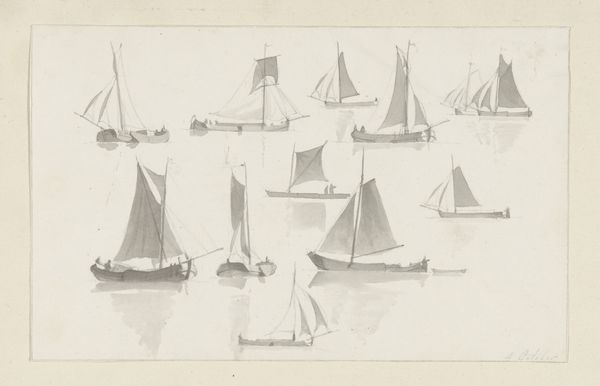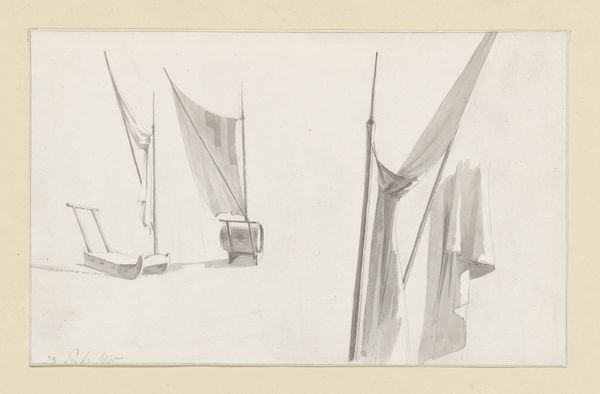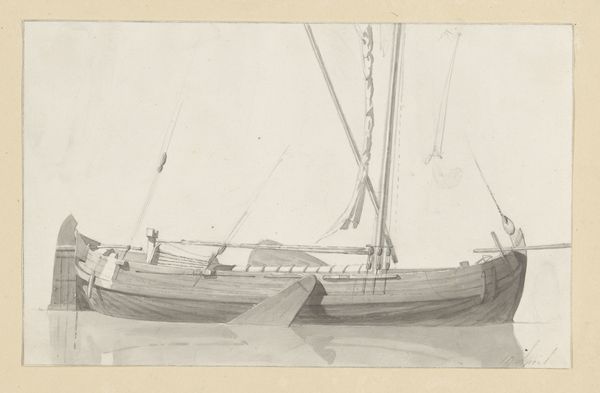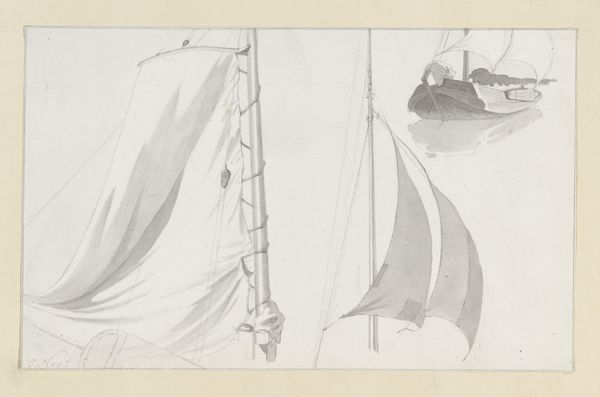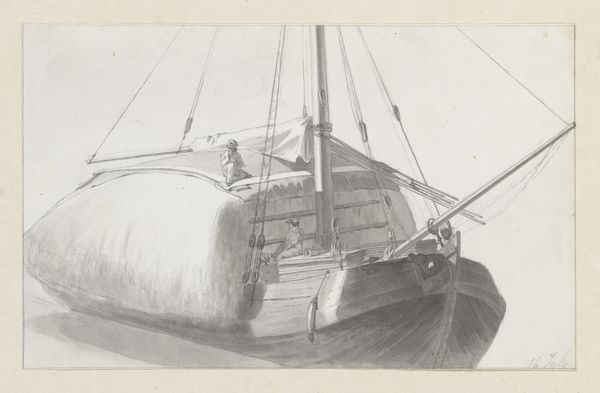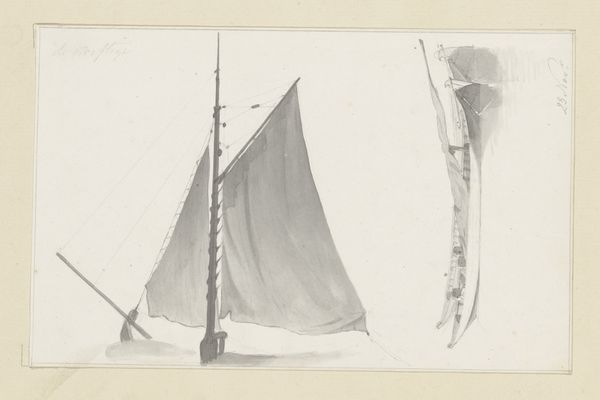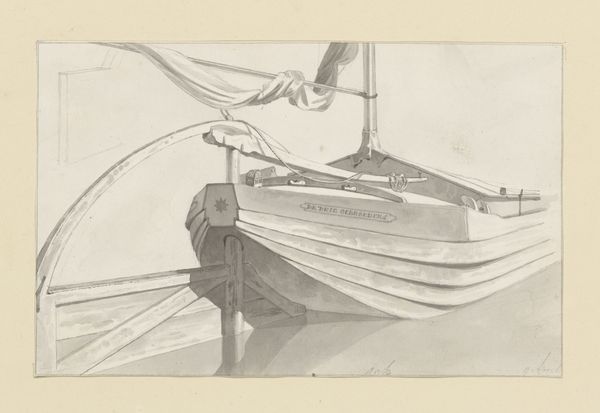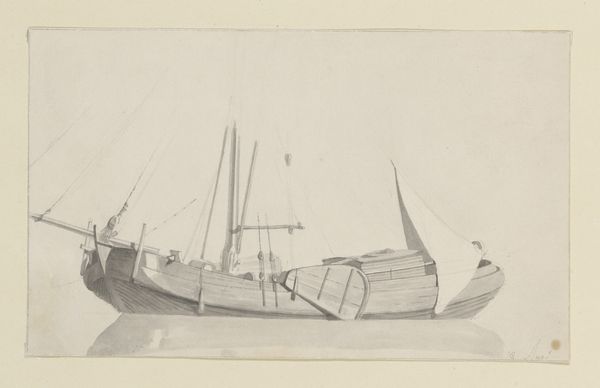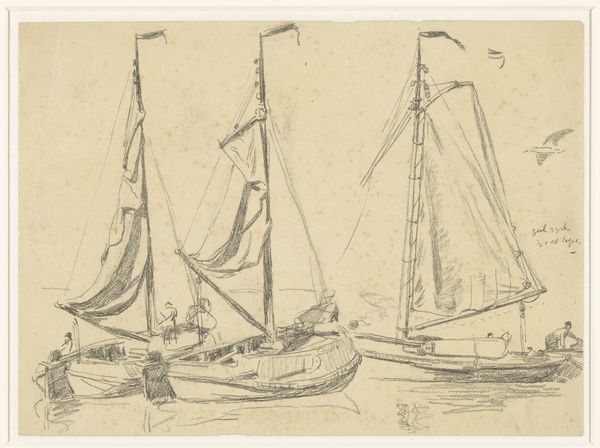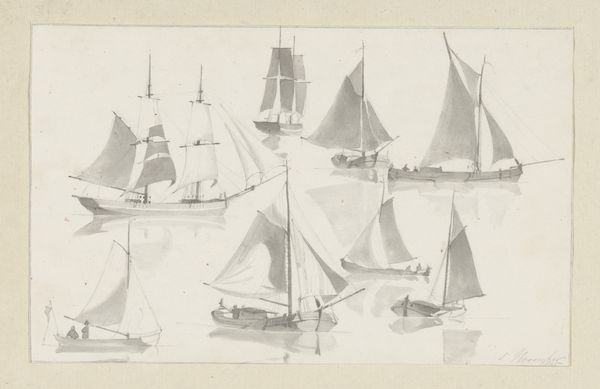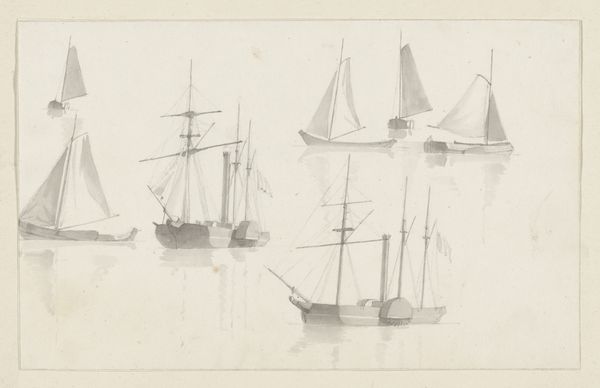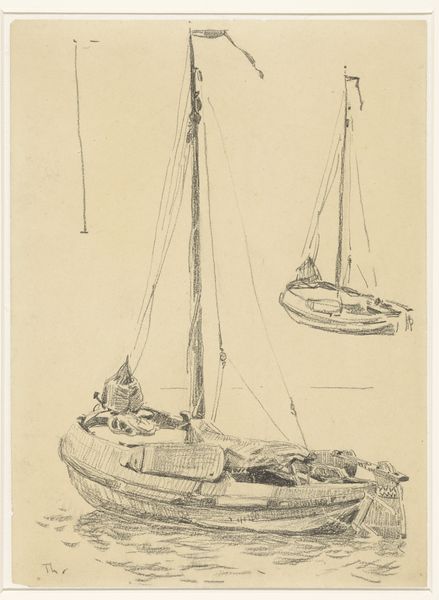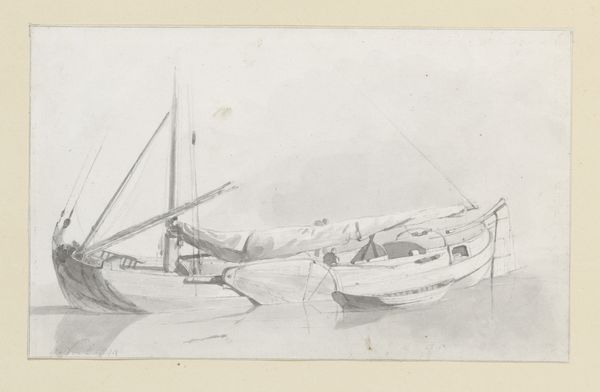
drawing, paper, ink, pencil
#
drawing
#
landscape
#
paper
#
ink
#
pencil
#
realism
Dimensions: height 124 mm, width 193 mm
Copyright: Rijks Museum: Open Domain
Editor: This is "Studieblad met zeilschepen," a study sheet with sailboats, created by Hendrik Abraham Klinkhamer in 1851. It's an ink and pencil drawing on paper and I find the sparseness of the image quite striking. What aspects of its creation stand out to you? Curator: Well, immediately the materials and their manipulation jump out. The choice of ink and pencil on paper, a relatively inexpensive medium, speaks to the nature of a study. This wasn’t intended as a finished, marketable product but rather a step in a longer production chain, focused on skill acquisition. Think about the social context: Was this drawing made for personal use or commissioned by a shipyard? Editor: That's a really interesting point. I hadn't considered who the end consumer would be. It makes me wonder about the value placed on these 'preparatory' works and how artists then profited from it, or didn’t! What do you mean by chain production? Curator: Precisely! Where does "art" begin and labor end? And did he sell them? Look at the repetition of forms, likely born from practice, an economic, or pedagogic exercise that eventually may, or may not, lead to a finished painting for sale, of seascapes with vessels rendered with assured realism. The study of sailcloth, its weave and tension against the wind, that kind of stuff. That might tell us more. Editor: So, by focusing on the materials and the process, we can understand not just the art, but the economic context in which it was created? Curator: Absolutely. Examining the materials reveals insights into the artist’s process, the economics of art production in the mid-19th century, and challenges traditional notions of artistic value. It's all interconnected, from the graphite in the pencil to the intended consumer. Editor: This gives me a whole new appreciation for the drawing; thinking of it less as a beautiful image and more as a piece of evidence within a complex system. Curator: Indeed. It invites us to think about the artist as worker and about the labor embedded in creating "art," opening up a discussion about craft and capitalism itself!
Comments
No comments
Be the first to comment and join the conversation on the ultimate creative platform.

